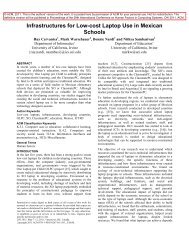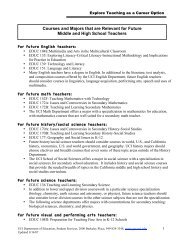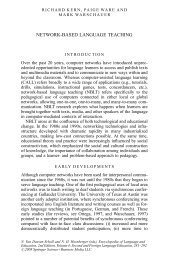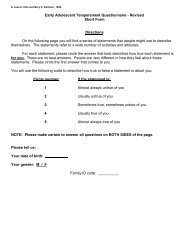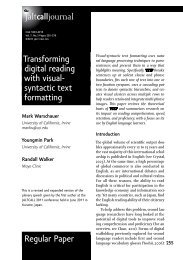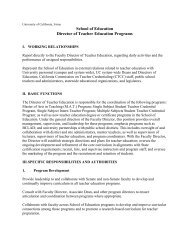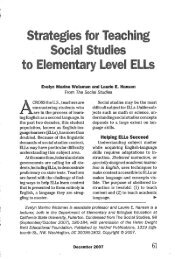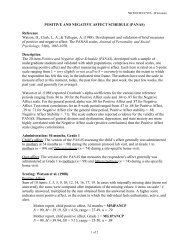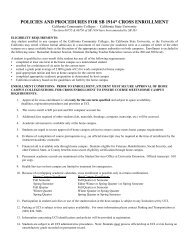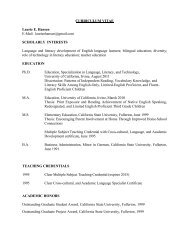A Sense of Proportion: Using perception to ground number symbols
A Sense of Proportion: Using perception to ground number symbols
A Sense of Proportion: Using perception to ground number symbols
You also want an ePaper? Increase the reach of your titles
YUMPU automatically turns print PDFs into web optimized ePapers that Google loves.
Percival G. Matthews<br />
University <strong>of</strong> Notre Dame<br />
association between magnitude and space is strongly implicated in the second type <strong>of</strong> <strong>number</strong><br />
sense, discussed below.<br />
<strong>Sense</strong> 2 – Number Line Estimation<br />
Siegler, Booth and colleagues have taken a somewhat different tack in exploring <strong>number</strong><br />
sense. These researchers have defined <strong>number</strong> sense as the ability <strong>to</strong> estimate numerical<br />
magnitudes. this take on the <strong>number</strong> sense focuses on the ability <strong>to</strong> generate <strong>number</strong>s whose<br />
magnitudes are close <strong>to</strong> correct values for the various types <strong>of</strong> estimation questions posed.<br />
Perhaps the most well known <strong>of</strong> these numerical estimation tasks is the <strong>number</strong> line estimation<br />
task. This task requires that participants estimate the location <strong>of</strong> a <strong>number</strong> on a line with<br />
numerical anchors at each end. This task not only involves magnitude estimation, but also the<br />
ability <strong>to</strong> translate between symbolic <strong>number</strong>s and mental magnitudes.<br />
Siegler and colleagues have helped illuminate a typical developmental trend observed on<br />
such <strong>number</strong> line tasks: young children show a tendency <strong>to</strong> compress <strong>number</strong>s logarithmically,<br />
whereas adults do not (e.g. Siegler & Booth, 2004; Booth & Siegler, 2006; Booth and Siegler,<br />
2008. The figure below is from Siegler & Booth, 2004). That is, when asked <strong>to</strong> mark the<br />
position where a <strong>number</strong> n is on the line, children typically place the mark at a spot<br />
approximated by log(n) instead <strong>of</strong> n. With development, these estimates become more linear<br />
(Siegler & Opfer, 2003). Importantly, increased linearity <strong>of</strong> children’s magnitude estimates<br />
predicts a wide range <strong>of</strong> numeracy measures, including counting ability, <strong>number</strong> naming, digit<br />
magnitude comparison, and achievement test scores (Ramani & Siegler, 2008; Siegler & Booth,<br />
2004).<br />
8



